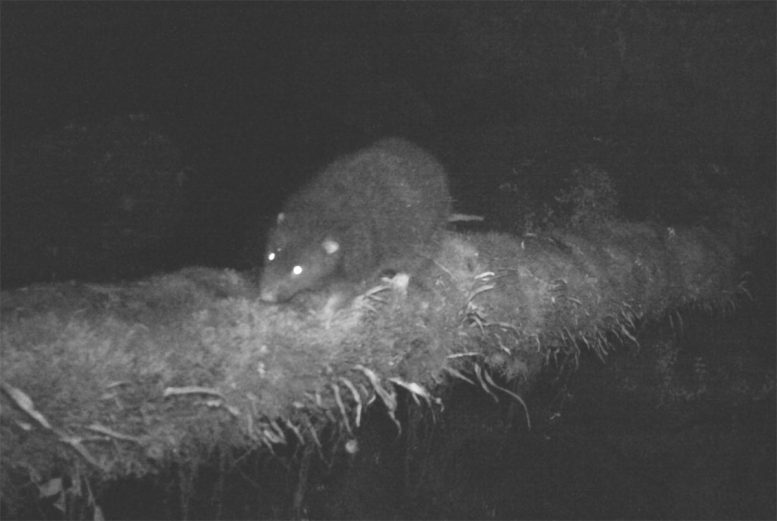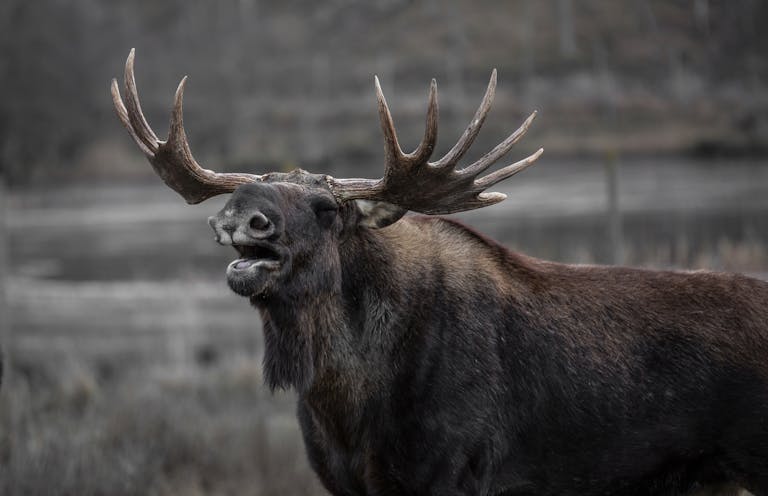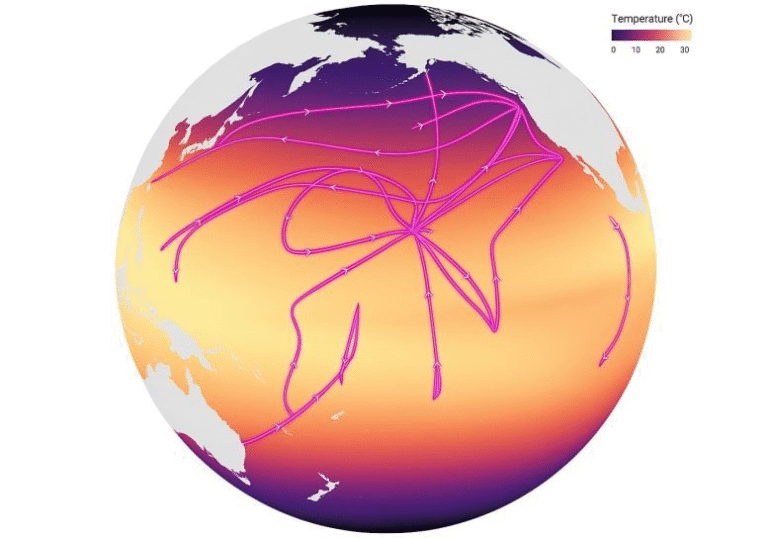First-Ever Photos Reveal the Subalpine Woolly Rat of New Guinea

A rare and secretive rodent, Mallomys istapantap, has finally been photographed and recorded alive in the wild for the very first time.
Known as the Subalpine Woolly Rat, this extraordinary animal is one of the largest murine rodents on Earth and has remained hidden from science for over three decades. Thanks to the dedicated work of František Vejmělka, a Czech doctoral student from the Biology Centre of the Czech Academy of Sciences and the University of South Bohemia, we now have detailed insights into this elusive species.
Rediscovery After 30 Years
The Subalpine Woolly Rat was first identified in 1989 through historical museum specimens. After that, it seemed to vanish, with the last confirmed sighting occurring over 30 years ago. For decades, scientists had no photographs or videos of the living animal, and its lifestyle remained almost entirely mysterious.
In 2025, during a six-month expedition to Papua New Guinea’s misty mountain regions, Vejmělka finally achieved what had never been done before. He observed and documented the animal in its natural environment, capturing both photographs and video footage. This marks a huge breakthrough in mammalian research, as one of the most mysterious rodents of the Australasian realm is now confirmed alive in its wild habitat.

Where It Lives
The Subalpine Woolly Rat inhabits high-elevation mountain forests and grasslands, typically at altitudes around 3,200 to 3,700 meters above sea level. These areas are cold, foggy, and extremely remote, making scientific access very challenging.
Its primary home is the slopes of Mount Wilhelm, which at 4,509 meters is the highest peak in Papua New Guinea. Vejmělka’s surveys stretched from the mountain’s base to its summit, covering a huge range of habitats. The remoteness and steepness of the terrain are key reasons why this species has gone largely undocumented for decades.
Physical Appearance and Size
The Subalpine Woolly Rat is striking in both size and appearance. Key features include:
- Length: About 85 centimeters from nose to tail (roughly 33 inches).
- Weight: Ranges from 995 grams to 1.5 kilograms, making it one of the heaviest murine rodents.
- Paws: Large, about 8 centimeters, built for climbing and grasping.
- Fur: Thick and shaggy, well-suited for the cold high-altitude climate.
- Chest Coloration: A reddish-brown patch on the chest, noted for the first time during these observations.
- Teeth: Strong, sharp incisors that allow it to process tough plant material.
Its impressive size places it alongside the giant cloud rats of the Philippines, ranking among the largest rodents of its type worldwide.
Behavior and Lifestyle
The Subalpine Woolly Rat is a nocturnal species. At night, it emerges to forage, often climbing trees to feed. During the day, it rests either in underground burrows or hidden high in the canopy.
Camera-trap recordings revealed fascinating behavior, including one instance where the rat was seen confidently crossing a stream by walking along a fallen mossy log. This shows that despite its bulky size, the animal is agile and well-adapted to rugged environments.
Vejmělka also documented activity patterns, diet, parasites, and movement, adding the first ecological data ever collected for the species.
Diet
The woolly rat is strictly herbivorous. Analysis of stomach contents showed that its diet is dominated by ferns and other alpine vegetation. This is consistent with the vegetation found at such high altitudes. Unlike some other rodents that have omnivorous diets, Mallomys istapantap appears to rely solely on plant matter.

The Importance of Local Knowledge
Vejmělka emphasized that his work would not have been possible without the assistance of indigenous hunters and local tribes. These communities have deep familiarity with the region’s wildlife and guided him through the challenging terrain.
The collaboration was mutually beneficial. While scientists gained critical ecological data, local communities also learned more about their region’s unique biodiversity and the importance of protecting it from modern threats like mining and deforestation.
Contribution to Science
The discovery provides several key scientific advances:
- First photographs and videos of the species in the wild.
- First biometric measurements for live individuals, including weight and body length.
- First ecological data on diet, activity patterns, and habitat use.
- Confirmation that the species is still present in its native environment, decades after its last known sighting.
This work also enriches the overall understanding of mammalian diversity in New Guinea, which remains one of the least explored regions for mammalian biology compared to tropical areas in Africa, the Americas, and Southeast Asia.
Why This Discovery Matters
The rediscovery of Mallomys istapantap highlights how much is still unknown about the biodiversity of tropical mountain ecosystems. Despite being a large and visually striking animal, it managed to remain undocumented in the wild until now. This shows that New Guinea’s highlands likely harbor many more undiscovered or understudied species.
It also underscores the importance of collaborative research, where scientists and local communities work together. Such partnerships not only benefit science but also foster conservation awareness among those who share their home with rare wildlife.
Comparison with Other Large Rodents
To put the Subalpine Woolly Rat in context, let’s look at a few other large rodents:
- Capybara: Native to South America, the capybara is the world’s largest rodent, weighing up to 66 kilograms. Unlike the woolly rat, it lives in lowland wetlands and has semi-aquatic habits.
- Giant Cloud Rats (Philippines): These are arboreal rodents similar in size to the woolly rat, often weighing 1 to 2 kilograms. They live in forested highlands and share many ecological traits with Mallomys.
- Beaver: Found in North America and Eurasia, beavers can weigh 16 to 30 kilograms. They are known for their ecological engineering, something not observed in woolly rats.
Compared to these, Mallomys istapantap is unique because it evolved in isolation in the mountains of New Guinea, where placental mammal competition has been limited for millions of years. This allowed woolly rats to expand into ecological niches that rodents elsewhere could not.
Open Questions
While this rediscovery is groundbreaking, several questions remain unanswered:
- What is the population density of the species across New Guinea’s highlands?
- Is it genuinely rare, or just extremely difficult to detect?
- What is its reproductive biology and life cycle?
- How might climate change and human activities threaten its habitat?
- Could there be undiscovered relatives of Mallomys istapantap still hidden in other mountain ranges of New Guinea?
Answering these questions will require more field research, genetic analysis, and conservation assessments.
The Bigger Picture: Biodiversity of New Guinea
New Guinea is one of the world’s biodiversity hotspots, home to extraordinary wildlife that is found nowhere else. The island’s mountainous terrain creates unique ecological zones, from tropical rainforests at lower elevations to subalpine grasslands at high altitudes.
Over 5 million years of isolation, rodents in this region have evolved into an impressive array of species. Without competition from many placental mammals (such as cats, dogs, or monkeys), rodents and marsupials took on roles filled by other animals elsewhere. This explains why species like the woolly rats could grow so large and diverse.
The rediscovery of Mallomys istapantap adds to a growing list of rare and unusual species that make New Guinea one of the most scientifically valuable regions on Earth.
Conclusion
The first-ever photos and videos of the Subalpine Woolly Rat represent a historic achievement in mammalogy. For decades, this giant rodent was known only from preserved specimens, and now, thanks to modern fieldwork and community collaboration, it has stepped back into the scientific spotlight.
This rediscovery not only enriches our knowledge of a single species but also reminds us of the untapped biodiversity still hidden in the world’s mountains. New Guinea, with its rugged peaks and isolated ecosystems, continues to reveal surprises that reshape our understanding of evolution and ecological diversity.





